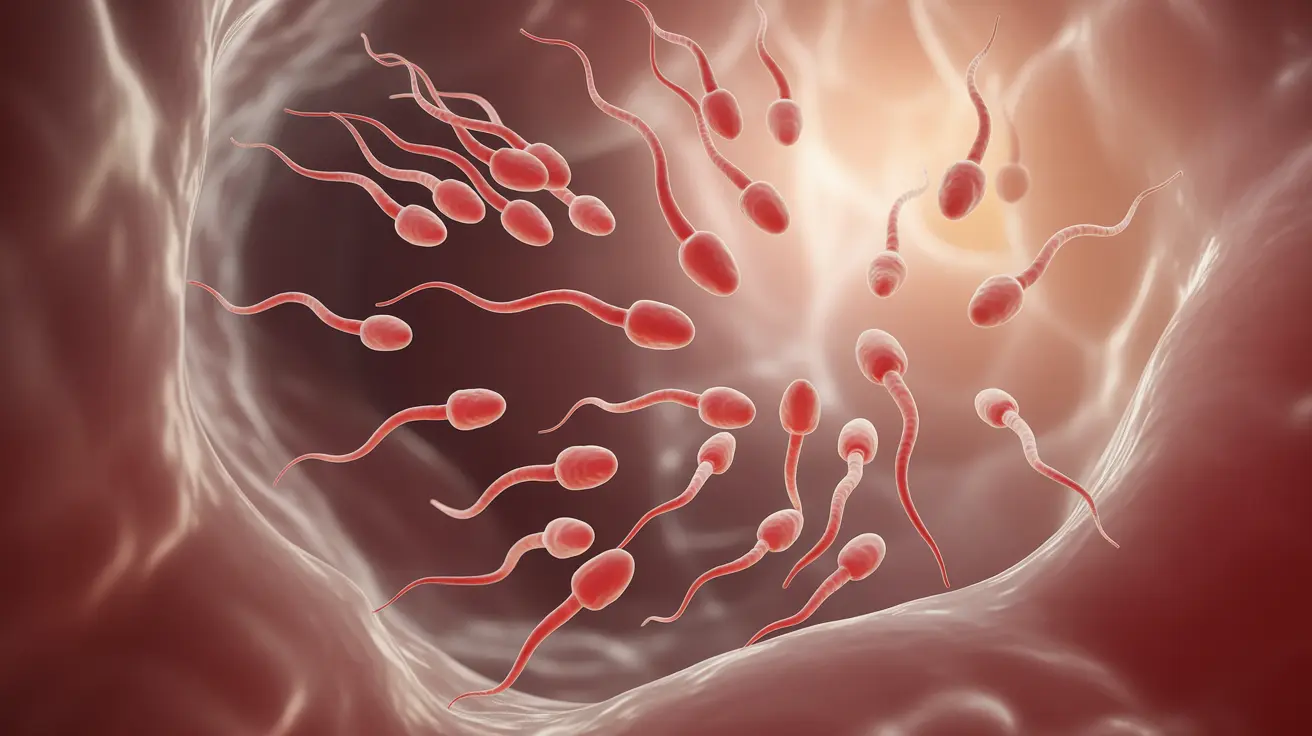Understanding sperm survival and viability is crucial for anyone planning to conceive or interested in reproductive health. While sperm cells are remarkably resilient, their survival depends on various environmental factors and biological conditions that significantly impact their lifespan and fertility potential.
In this comprehensive guide, we'll explore how long sperm can survive under different conditions and examine the factors that influence their viability, from the natural environment of the female reproductive tract to artificial preservation methods.
Sperm Survival in the Female Reproductive Tract
Inside the female reproductive tract, sperm can potentially survive for up to five days under optimal conditions. However, studies show that only a small percentage of sperm actually survive this long. The majority of sperm cells typically remain viable for about 48-72 hours after ejaculation.
Role of Cervical Mucus
Cervical mucus plays a vital role in sperm survival and transport. During the fertile window, cervical mucus becomes thin and stretchy, creating an optimal environment for sperm. This "fertile" mucus provides:
- Nourishment for sperm cells
- Protection from the acidic vaginal environment
- Channels for sperm to travel through
- Filtering mechanism for abnormal sperm
Environmental Factors Affecting Sperm Survival
Outside the body, sperm survival is significantly limited by environmental conditions. Temperature, pH levels, and exposure to air all impact how long sperm can remain viable.
Temperature Effects
Sperm cells are extremely sensitive to temperature changes. They function best at temperatures slightly below normal body temperature (around 93-96°F or 34-35.5°C). Exposure to temperatures outside this range can quickly reduce sperm viability.
Survival in Different Environments
The survival time of sperm varies dramatically depending on the environment:
- Air exposure: Minutes to hours
- Room temperature: Several hours maximum
- Body temperature: Up to 5 days in ideal conditions
- Artificial preservation: Years when properly frozen
Modern Sperm Preservation Methods
Cryopreservation has revolutionized sperm storage and fertility treatment options. This process involves carefully freezing sperm cells at extremely low temperatures, allowing them to remain viable for extended periods.
Cryopreservation Process
The process involves:
- Careful screening and analysis of sperm samples
- Addition of special protective solutions
- Controlled-rate freezing
- Storage in liquid nitrogen at -196°C (-320°F)
Frequently Asked Questions
What percentage of sperm typically survive for the full five days inside the female reproductive tract?
Only about 1-2% of sperm typically survive for the full five days inside the female reproductive tract. The majority of sperm cells either die or lose their fertility potential within the first 24-72 hours after entering the reproductive tract.
How does cervical mucus affect sperm survival and fertility?
Cervical mucus significantly impacts sperm survival by providing a protective and nurturing environment. During the fertile window, cervical mucus becomes more alkaline and develops a structure that helps filter, protect, and transport viable sperm while preventing the passage of abnormal sperm.
What are the optimal conditions for sperm survival outside the human body?
Outside the body, sperm survive best in environments that maintain a temperature between 93-96°F (34-35.5°C), have a slightly alkaline pH (7.2-7.8), and protect against air exposure and dehydration. These conditions must be carefully controlled in laboratory settings.
Can sperm survive in water, such as in a pool or hot tub?
Sperm cells survive very poorly in water. In pools or hot tubs, the chemicals, temperature, and water pressure quickly kill sperm cells, typically within seconds to minutes. The myth about sperm survival in these conditions is largely unfounded.
How does cryopreservation affect the lifespan and viability of sperm for future use?
When properly cryopreserved, sperm can remain viable for decades. The process involves careful preparation with protective solutions and controlled freezing. While some sperm cells may not survive the freezing and thawing process, those that do maintain their fertility potential for future use in assisted reproduction procedures.




